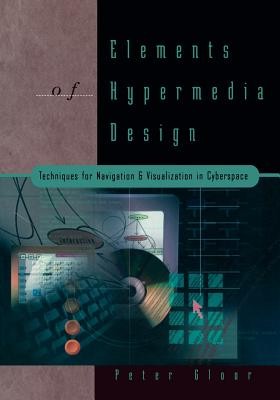
- We will send in 10–14 business days.
- Author: Peter Gloor
- Publisher: Birkhäuser
- ISBN-10: 081763911X
- ISBN-13: 9780817639112
- Format: 18.4 x 23.4 x 2.3 cm, minkšti viršeliai
- Language: English
- SAVE -10% with code: EXTRA
Elements of Hypermedia Design: Techniques for Navigation & Visualization in Cyberspace (e-book) (used book) | bookbook.eu
Reviews
Description
The hypermedia authoring process has been vividly described in a special issue of the Economist as a combination of writing a book, a play, a film, and a radio or television show: A hypermedia document combines all these elements and adds some of its own. The author' s first job is to structure and explain all of the infor- mation. The author then must distill the information into brief, descriptive nodes. Each node has to contain a Iist of the ingredients, and instructions on how the ingredients are mixed together to the greatest advantage. The structure of the material provided is translated into an architectural metaphor of some kind; much of the designer' s work is the creation of this imaginary space. Then, the designers must chart the details of what to animate, what to film, who to inter- view, and how to arrange the information in the space tobe built [Eco95a]. This book presents guidelines, tools, and techniques for prospective authors such that they can design better hypermedia documents and applications. lt surveys the different techniques used to organize, search, and structure infor- mation in a large information system. It then describes the algorithms used to locate, reorganize, and link data to enable navigation and retrieval. It Iooks in detail at the creation and presentation of certain types of visual information, namely algorithm animations. It introduces new mechanisms for editing audio and video data streams.
EXTRA 10 % discount with code: EXTRA
The promotion ends in 23d.13:28:33
The discount code is valid when purchasing from 10 €. Discounts do not stack.
- Author: Peter Gloor
- Publisher: Birkhäuser
- ISBN-10: 081763911X
- ISBN-13: 9780817639112
- Format: 18.4 x 23.4 x 2.3 cm, minkšti viršeliai
- Language: English English
The hypermedia authoring process has been vividly described in a special issue of the Economist as a combination of writing a book, a play, a film, and a radio or television show: A hypermedia document combines all these elements and adds some of its own. The author' s first job is to structure and explain all of the infor- mation. The author then must distill the information into brief, descriptive nodes. Each node has to contain a Iist of the ingredients, and instructions on how the ingredients are mixed together to the greatest advantage. The structure of the material provided is translated into an architectural metaphor of some kind; much of the designer' s work is the creation of this imaginary space. Then, the designers must chart the details of what to animate, what to film, who to inter- view, and how to arrange the information in the space tobe built [Eco95a]. This book presents guidelines, tools, and techniques for prospective authors such that they can design better hypermedia documents and applications. lt surveys the different techniques used to organize, search, and structure infor- mation in a large information system. It then describes the algorithms used to locate, reorganize, and link data to enable navigation and retrieval. It Iooks in detail at the creation and presentation of certain types of visual information, namely algorithm animations. It introduces new mechanisms for editing audio and video data streams.


Reviews